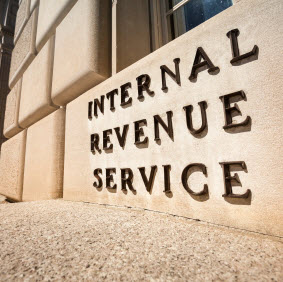
The IRS recently issued a memorandum entitled, “Interim Guidance for Report of Foreign Bank and Financial Accounts (FBAR) Penalties.” As explicitly stated in the memorandum, its purpose is to improve the administration of the IRS’s FBAR compliance program. How so? By implementing new procedures. This guidance affects two specific IRMs: 4.26.16 and 4.26.17.
For those who thought that the IRS might have waited a couple months before making these procedures effective so as to allow tax practitioners sufficient time to get up to speed and to work out any “kinks,” that was wishful thinking. Far from enacting a “grace period,” these new procedures went into effect the very day they were published, which just so happened to be May 13, 2015. Thus, this guidance is effective immediately and Read More


 A few weeks ago, Mohanbhai Ramchandani, pled guilty to violating the laws implementing the United States Treasury Department’s Foreign Bank and Financial Accounts Report (FBAR) as well as to filing false tax returns to conceal $3.2 million earned in his swanky New York City tailoring business. While the tailor could probably easily estimate a customer’s suit size, he had completely underestimated the tenacity of the Internal Revenue Service to “follow the money”… But, find it they did, in bank accounts located at the Bank of India, in Hong Kong and at accounts in Canada and India (some in his son’s name). Between 2007 and 2009, Ramchandani did not pay tax on the hidden $3.2 million he had stashed in the foreign bank accounts and, in violation of FBAR laws, he failed to report that he had those accounts. Ramchandani’s cheating resulted in a tax loss of US$ 736,002 for the 3-year period 2007, 2008 and 2009. When sentenced, Ramchandani faces up to five years in prison (let’s hope the tailor likes black stripes!). Also, he faces a penalty of $1.6 million for the FBAR violations, restitution to the Internal Revenue Service of $736,002.00 for unpaid taxes and probably oodles and oodles of interest!
A few weeks ago, Mohanbhai Ramchandani, pled guilty to violating the laws implementing the United States Treasury Department’s Foreign Bank and Financial Accounts Report (FBAR) as well as to filing false tax returns to conceal $3.2 million earned in his swanky New York City tailoring business. While the tailor could probably easily estimate a customer’s suit size, he had completely underestimated the tenacity of the Internal Revenue Service to “follow the money”… But, find it they did, in bank accounts located at the Bank of India, in Hong Kong and at accounts in Canada and India (some in his son’s name). Between 2007 and 2009, Ramchandani did not pay tax on the hidden $3.2 million he had stashed in the foreign bank accounts and, in violation of FBAR laws, he failed to report that he had those accounts. Ramchandani’s cheating resulted in a tax loss of US$ 736,002 for the 3-year period 2007, 2008 and 2009. When sentenced, Ramchandani faces up to five years in prison (let’s hope the tailor likes black stripes!). Also, he faces a penalty of $1.6 million for the FBAR violations, restitution to the Internal Revenue Service of $736,002.00 for unpaid taxes and probably oodles and oodles of interest!

















Recent Comments